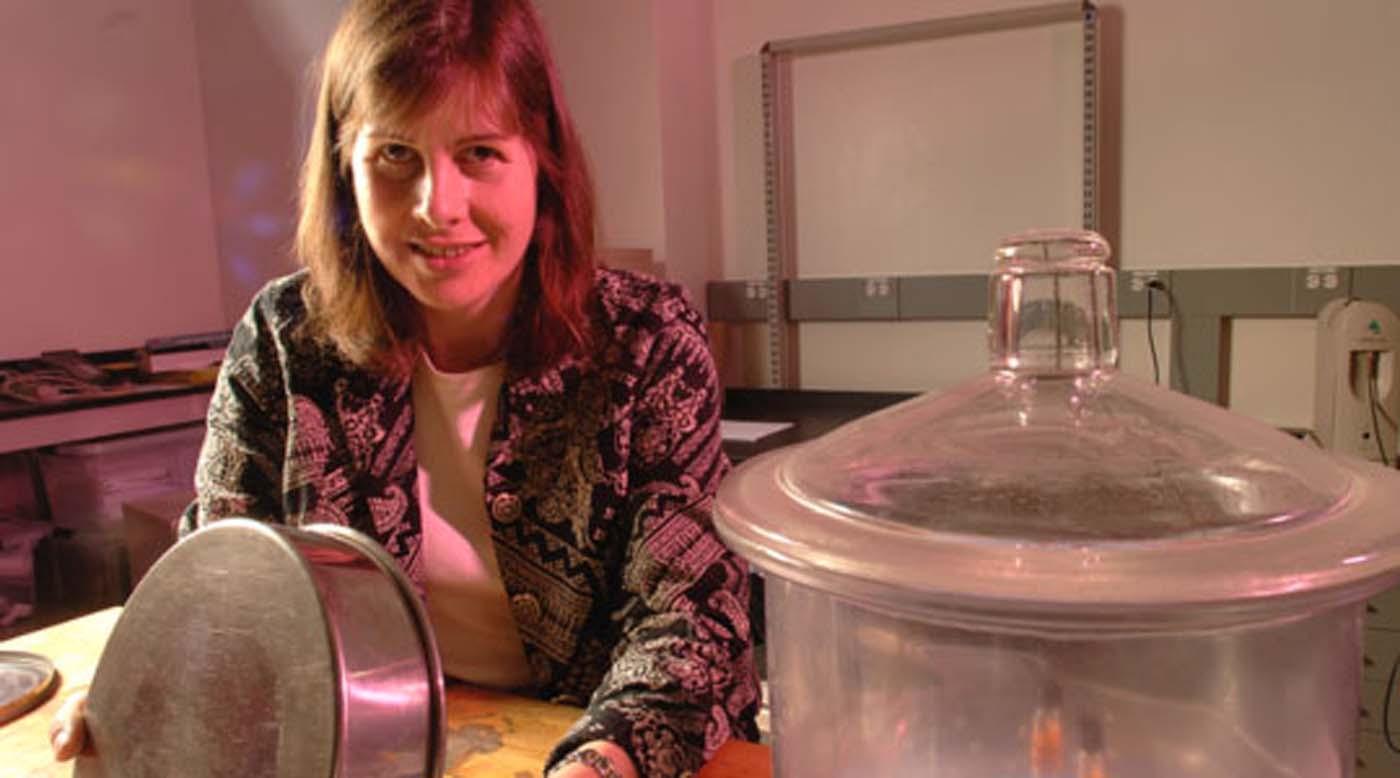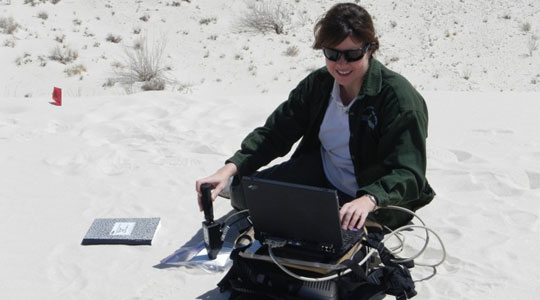
Janice Bishop is a chemist and Senior Planetary Scientist at the SETI Institute who explores the planet Mars using spectroscopy. Her investigations of CRISM data of Mars are revealing clays and sulfates in the ancient rocks that provide information about the geochemical environment at the time the minerals formed.
Bishop studies the spectral fingerprints of minerals and rocks in the lab in order to generate a spectral library for identification of these in the martian data. Her research also involves collecting and studying Mars analog rocks and soils at a variety of locations including volcanic islands, cold deserts, hydrothermal regions, acidic aqueous sites, and meteorites, which are the only Martian samples available on Earth to date.
Another component of Bishop’s research is collecting spectra under Mars-like conditions. Spectra of many hydrated minerals change depending on the moisture level in the air and the amount of water molecules adsorbed on the surface or bound in the mineral structure. Understanding the spectral properties of mineral mixtures in the lab is also important for identifying minerals on Mars and Dr. Bishop’s group is preparing and characterizing the spectral properties of several mixture suites.

Excerpts from an interview with Janice Bishop - by Gail Jacobs
Minerals have a unique signature that is like a fingerprint. They show up as small peaks and dips in the spectrum. By looking for these dips, peaks, and curves, we can identify minerals on the planet. In order to identify minerals on Mars, however, we need to study minerals in the lab and at field locations analogous to Mars, which are two other projects of mine.
I have several ongoing projects, which all primarily relate to mineralogy on Mars. We are trying to identify the ancient rocks on the planet – rocks that contain clays, sulfates, and other minerals that formed under aqueous conditions. These findings will allow us to look for areas where water might have been present on the planet and where life might have been a possibility.
We are finding many of these clays in the really ancient rocks. It’s like having access to this clear window back into time on the planet Mars. We do not have that option for Earth because our planet has been “contaminated” by life. Our planet is a host to all types of plants and animals that have changed the planet substantially in the past 4 billion years. But on Mars, the clay minerals in particular can tell us a lot about the geochemical environment 4 billion years ago, and that helps us understand what the planet was like then and if life might have evolved. Whether life did or did not evolve is interesting and helps us further understand evolution of life on our planet Earth, and that is pretty cool.
A lot of people are curious about Earth’s evolutionary process. One of the big reasons we might care about how life evolved on Mars is because this information could help reveal more about our own planet. We hope to learn how those minerals on Mars formed and whether or not life evolved. Studying the clays and understanding how Mars’ early geochemical environment changed will help tell us whether or not there was life there and how it might have evolved. And that information can help us better understand how life might have evolved here on Earth.
When asked what motivates her to do what she does:
I love what I do! I love my projects. I don’t really ever put them away; they are always traveling with me. Occasionally I’ll wake up at night with a great idea, then write it down and go back to sleep. Often I get an idea while I’m listening to a lecture or waiting for an appointment — the ideas always bubble up. The thoughts are always there and the projects are always working in the back of my mind. It is just a part of my life.





